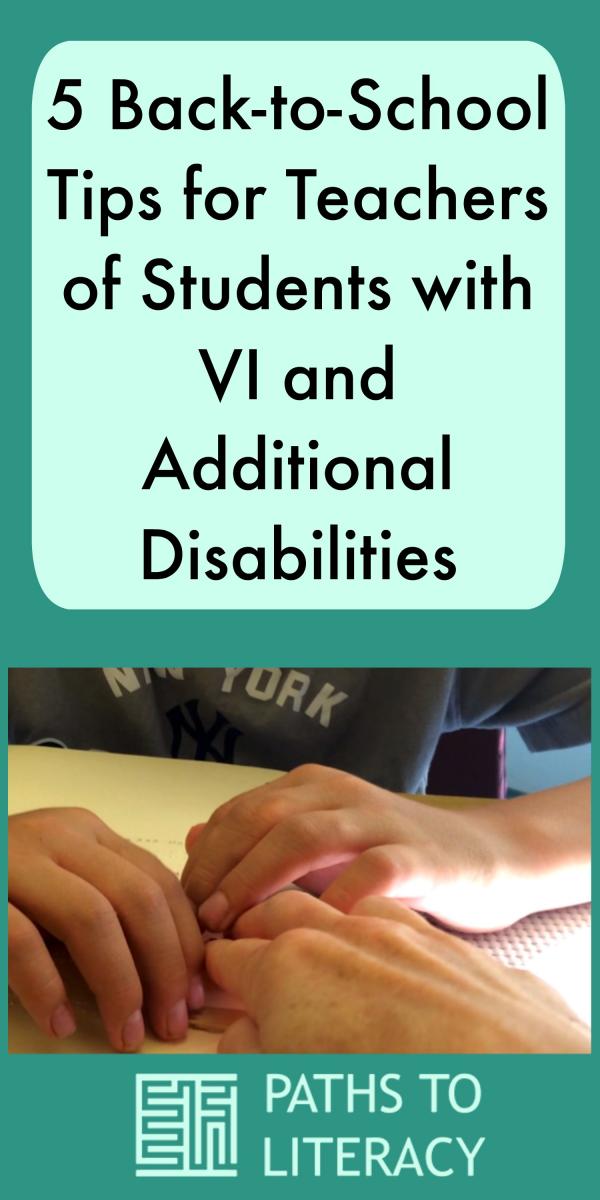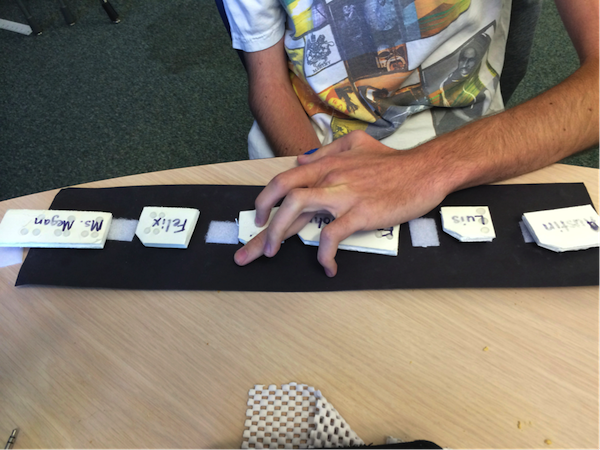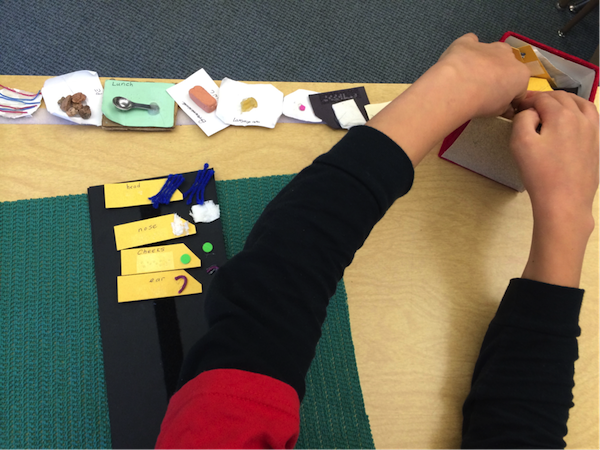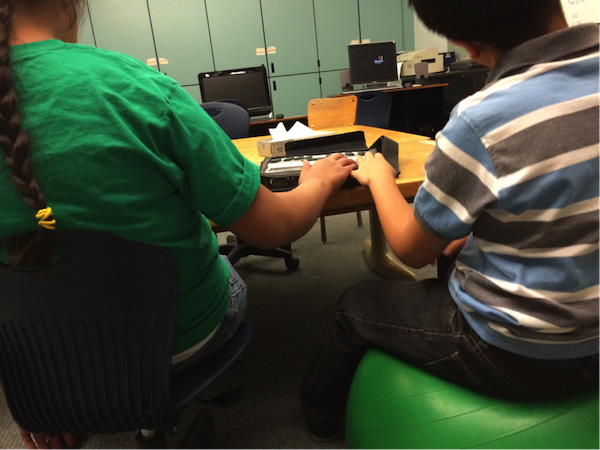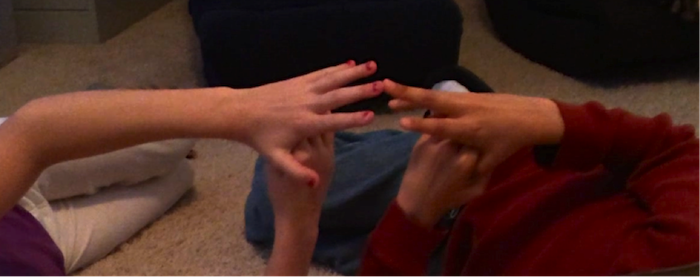5 Back-to-School Tips for Teachers of Students with VI and Additional Disabilities
Submitted by Megan Mogan on Aug 23, 2015
Whether you are raring to go and have your materials all organized, or your vacation flight arrives home the night before your first day back, it’s time. Here are just a few things I like to remind myself this back-to-school time of year.
1) Start here. Start now.
When my students start on their first day of school, what will I need to do to support accessible security, trust, and familiarity? Do they have preferred, hands-on activities in place? Do they have established routines set up? Do they have familiar people and friends/peers with whom to immediately connect? If my students are OK with functioning outside of the here and now, do I have symbol systems in place to represent these places, activities, and people? If so, my lesson plans will practically write themselves.
Last May, a student read his tactile table map with name symbols in order to take roll before an activity. This system is ready to go the first day of the new school year, minus the names of his friends who graduated.
2) Observe. Observe. Observe.
Build observation time into the schedule now before things get crazy. Observation is just as important as intervention and direct teaching. It is a critical part of ongoing assessment and allows me to document those subtle yet OBSERVABLE behaviors that show my teaching is effective. Did someone say slight head turn in anticipation of an activity? Yes!
I observed my student putting something in his finished box that was not a calendar symbol. Did he just tell me he didn’t want to continue our activity using a really concrete system? Check!
3) Asking for help is not a sign of failure or incompetence.
There are days I question all I do. There are nights I can’t sleep because of that one student. I will never, ever know it all. No one will. The more I seek guidance and knowledge from people who have been in my shoes, the more I put myself in a position to learn and even change. My students will also get more out of me eliminating the trial and error that someone else has already trialed and error-ed.
I had no idea how to even begin to implement electronic braille notetaking technology into my students’ writing lessons. Luckily, I worked with an amazing Assistive Technology Specialist who responded to my email SOS.
4) My work will be there tomorrow.
It is 5 p.m. Go home. Watch a bad reality TV show. Have a conversation from start to finish. Working with students who have low incidence disabilities can involve a lot of extra prep and planning. There are lessons and materials, and then there are all of the adaptations and modifications to those lessons and materials. Take care of myself. The to-do list will be there when I am refreshed. I may have to neglect a small part of my job temporarily, but the rewards of productivity outside of my job enhance my role as an effective educator.
An Arizona sunset is never to be missed, not even for repairing calendar symbols that were intentionally mouthed earlier in the day.
5) Take the time to “Just be.”
We function in an educational culture which is fast-paced and places a lot of value on high-level communication skills that our students may or my not have access to. Try to set this demanding (and often stressful) pace aside at least for one moment each day, and we may find it soon makes up several moments across each day.
When I look back on some of the most meaningful connections I have had with my VI students with additional disabilities, it was when we could just be. “I accept you and you accept me in this moment.” Sometimes that moment of connection was all we needed as a beginning, middle, or end to something I could quantify with data. The space in which connection (physical or otherwise) occurs is a wonderful space for learning to occur. This is coincidentally the space in which I love my job and it doesn’t feel at all like “work.”
This brief, invited connection between a deafblind student and his friend supports a trusting relationship.
Early communication, literacy, and learning cannot occur in the absence of a trusting relationship.
Touching learning media at the same time as a student can eliminate the need for words or questions. It can simply express, “I’m watching. I’m listening. I’m here.”
Welcome back!
Resources:
1) Start Here Start Now
Resources for setting up Routines and Calendar Systems, Texas School for the Blind and Visually Impaired
2) Observe, Observe, Observe
Resources for building observation into your regular assessment, Texas School for the Blind and Visually Impaired
3) Asking for Help
Paths to Literacy is a great starting place for questions you may have. You will often find that an educator has had your exact same question!
4) Your Work will be there Tomorrow
Did you know the phrase “Work-Life-Balance” gets Googled 50,000 times each month? http://www.forbes.com/sites/womensmedia/2015/07/27/the-work-life-balance-fallacy/
Look for tips that resonate with you and match your personal family and work-life needs.
5) Take the time to just be
When I feel stuck about how to connect with a student, I often go back to these two articles and re-read.
“Conversations Without Language,” By Linda Hagood with Kate Moss Hurst
“Talking the Language of the Hands to the Hands,” By Barbara Miles
